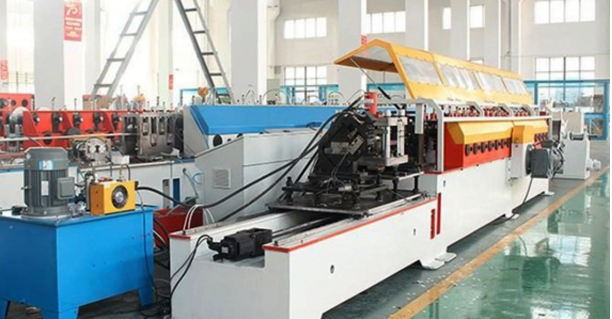When it comes to roll-formed metal products, coatings play a vital role in enhancing durability, corrosion resistance, and appearance. Choosing the right coating depends on the environment, intended use, and desired aesthetic. Here's a breakdown of the best coatings for roll-formed metal products:
1. Galvanization (Zinc Coating)
- Purpose: Provides excellent corrosion protection by acting as a sacrificial layer, which protects the metal underneath.
- Common Uses: Roofing, siding, and structural components in outdoor or industrial environments.
- Advantages: Cost-effective, long-lasting, and widely available.
- Considerations: Not suitable for applications requiring high aesthetic appeal, as it can develop a patina over time.
2. Galvalume (Zinc-Aluminum Coating)
- Purpose: Combines zinc and aluminum for enhanced corrosion resistance, offering better protection in harsh environments than galvanization.
- Common Uses: Roofing, metal buildings, and storage tanks.
- Advantages: Longer lifespan than traditional galvanized coatings, better resistance to scratches and oxidation.
- Considerations: Slightly higher cost, less flexibility in terms of coloring options compared to painted coatings.
3. Painted Coatings (Polyester, Silicone-Modified Polyester, PVDF)
- Purpose: Adds a durable, aesthetic finish while providing protection from UV rays, corrosion, and wear.
- Common Uses: Architectural panels, building facades, and decorative metal components.
- Advantages: Available in a wide variety of colors and finishes, durable against weathering and fading.
- Considerations: Requires proper surface preparation for optimal adhesion and durability.
- Types:
- Polyester: Economical and offers good color retention for moderate environments.
- Silicone-Modified Polyester (SMP): Enhanced durability, better suited for environments with higher sun exposure.
- PVDF (Polyvinylidene Fluoride): High-end, long-lasting coating, excellent for harsh climates and coastal applications.
4. Anodizing
- Purpose: Primarily used for aluminum, this electrochemical process increases corrosion resistance and enhances the finish.
- Common Uses: Aluminum components in construction and transportation.
- Advantages: Long-lasting, improves metal's resistance to scratching, corrosion, and wear.
- Considerations: Typically limited to aluminum, less flexible in terms of color compared to painted coatings.
5. Powder Coating
- Purpose: Provides a thick, uniform coating with excellent resistance to chipping, scratching, and corrosion.
- Common Uses: Outdoor furniture, metal fences, and automotive components.
- Advantages: Wide range of colors and finishes, eco-friendly application with minimal waste.
- Considerations: Higher upfront cost compared to traditional liquid paints, requires specialized equipment for application.
6. Epoxy Coating
- Purpose: Provides a durable, corrosion-resistant finish suitable for harsh chemical environments.
- Common Uses: Industrial equipment, pipelines, and metal components in chemical processing plants.
- Advantages: Excellent protection against chemical exposure and moisture.
- Considerations: Can yellow or degrade under prolonged UV exposure, so it is more suited for indoor applications.
How to Select the Right Coating:
- Environment: Consider factors like exposure to moisture, chemicals, UV rays, and temperature fluctuations.
- Aesthetic Requirements: If appearance is key, painted coatings or powder coatings offer the best range of finishes.
- Longevity: For harsh environments (coastal, industrial), coatings like Galvalume or PVDF are ideal.
- Budget: Balance between cost and the level of protection needed. Zinc and polyester coatings are cost-effective but may not last as long as PVDF or Galvalume.
Choosing the right coating ensures that roll-formed metal products perform optimally, whether they're part of a building facade, industrial equipment, or decorative structure. The right choice will enhance both functionality and appearance while extending the product's lifespan.




